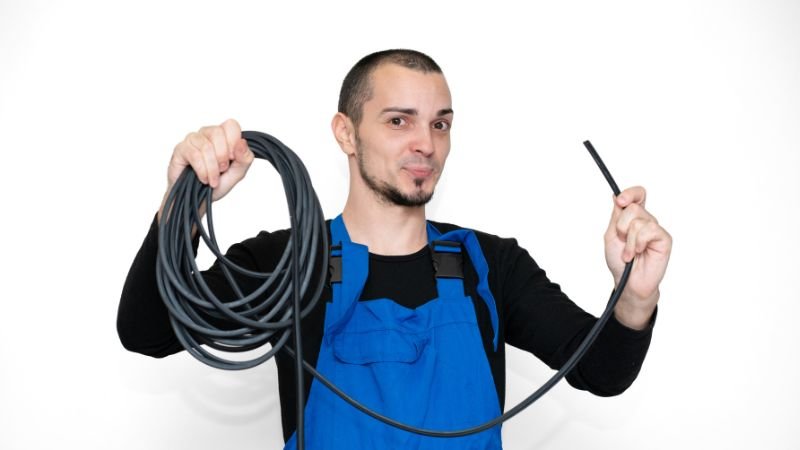Finding a reliable material that can handle heavy loads is crucial. Silicone, known for its versatility and durability, often comes up in discussions. But how much weight can it really support? This question is important for businesses relying on silicone for various applications, from industrial parts to baby products.
Silicone can hold a surprising amount of weight. The specific capacity depends on several factors, including the type of silicone, its thickness, and how it’s used. Typically, silicone can bear loads ranging from a few pounds to several hundred pounds per square inch (PSI).
So, how does silicone achieve this impressive feat? Let’s delve into the details.
What Factors Affect How Much Weight Silicone Can Hold?
Several factors influence silicone’s load-bearing capacity. Understanding these can help you choose the right silicone product for your needs.
Type of Silicone
Different types of silicone have varying strengths. For example, high-temperature vulcanizing (HTV) silicone is often used in industrial applications due to its excellent mechanical properties. Liquid silicone rubber (LSR) is another type known for its flexibility and durability, suitable for products like kitchenware and medical devices.
Thickness and Density
The thickness and density of silicone also play a crucial role. Thicker, denser silicone can support more weight. For instance, a silicone sheet with a higher density will hold more weight compared to a thinner one. Density is measured in durometer. The higher the durometer, the more load it can bear.
Surface Area and Distribution
The surface area and distribution of the weight are vital. Silicone can hold more weight if the load is evenly distributed. For instance, a large silicone mat can support more weight than a small patch because the force is spread over a broader area.
Temperature and Environment
The environmental conditions where silicone is used also matter. Silicone maintains its properties in extreme temperatures, ranging from -60°C to 250°C. However, prolonged exposure to these extremes can affect its load-bearing capacity. Additionally, factors like humidity and chemical exposure can impact silicone’s strength.

How to Calculate Silicone’s Load-Bearing Capacity?
Calculating the exact load-bearing capacity of silicone involves several steps. Here’s a simplified approach:
Determine the Type of Silicone
Identify the specific type of silicone you are using. Each type has its mechanical properties and strength ratings. Manufacturers often provide these details in product specifications.
Measure Thickness and Surface Area
Measure the thickness and surface area of the silicone component. Thicker materials generally support more weight. Calculate the surface area that will bear the load. A larger area distributes the weight more evenly.
Consider Environmental Factors
Evaluate the operating conditions. Take into account the temperature, humidity, and any potential chemical exposure. These factors can influence silicone’s performance.
Apply Safety Factors
Finally, apply a safety factor to your calculations. This accounts for any unforeseen conditions or variations in material properties. A common practice is to use a safety factor of 2-4 times the expected load.
Examples of Silicone’s Load-Bearing Applications
Industrial Uses
In industrial settings, silicone is used for seals, gaskets, and hoses. These components often need to withstand high pressures. For instance, silicone gaskets in automotive engines can endure pressures up to 200 PSI.
Medical Devices
Silicone’s biocompatibility makes it ideal for medical devices. In applications like prosthetics, silicone must support significant weight. High-quality medical-grade silicone can bear loads of up to 50 PSI without losing shape or functionality.
Consumer Products
In everyday products, silicone’s load-bearing capacity is equally impressive. For example, silicone baking mats can hold heavy trays of food without tearing or deforming. These mats can support weights of up to 10 pounds per square inch.
Construction Materials
Silicone is also used in construction for sealants and adhesives. These products need to hold structural elements together, often under stress. Construction-grade silicone sealants can bear weights of up to 100 PSI, ensuring stability and safety.

How Does Silicone Compare to Other Materials?
Silicone vs. Rubber
Silicone is often compared to traditional rubber. While both materials have similar properties, silicone generally has a higher temperature tolerance and chemical resistance. This makes it a better choice for applications involving extreme conditions. For instance, rubber gaskets may start to degrade at temperatures above 100°C, while silicone gaskets can maintain their integrity up to 250°C.
Silicone vs. Plastic
Silicone is more flexible and durable than most plastics. Plastics can become brittle and crack under heavy loads or extreme temperatures. Silicone, on the other hand, retains its elasticity and strength. For example, plastic seals in food containers may break down after repeated use, whereas silicone seals remain effective and durable over time.
What Are the Limitations of Silicone?
Despite its many advantages, silicone does have limitations. Understanding these can help you make better decisions for your applications.
Cost
Silicone tends to be more expensive than other materials like rubber or plastic. This higher cost can be a drawback for large-scale projects or budget-conscious applications. However, the long-term benefits of durability and performance often outweigh the initial expense.
Processing Challenges
Working with silicone can be challenging. It requires specific processing techniques, such as injection molding or compression molding. These processes need specialized equipment and expertise, which can add to the overall cost and complexity of production.
Limited Load-Bearing in Thin Applications
In very thin applications, silicone’s load-bearing capacity decreases. For instance, a thin silicone sheet may not support heavy weights as effectively as a thicker one. This limitation makes it crucial to choose the right thickness for your specific needs.
How to Maximize Silicone’s Load-Bearing Capacity?
To get the most out of silicone’s load-bearing abilities, consider these tips:
Choose the Right Type
Select the appropriate type of silicone for your application. High-strength HTV silicone is ideal for industrial uses, while flexible LSR is better for consumer products.
Optimize Thickness and Density
Ensure the silicone component is thick and dense enough to support the expected load. Use higher durometer silicone for applications requiring more strength.
Ensure Even Weight Distribution
Distribute the weight evenly across the silicone surface. This reduces the risk of overloading specific areas and enhances overall durability.
Monitor Environmental Conditions
Regularly check the operating conditions. Ensure the silicone is not exposed to temperatures or chemicals beyond its tolerance levels.
Conclusion
Silicone’s load-bearing capacity is impressive and versatile. By understanding the factors that affect its strength and choosing the right type for your application, you can maximize its performance. Whether in industrial settings, medical devices, or everyday consumer products, silicone proves to be a reliable and durable material. For more detailed information on silicone’s properties and applications, check out this comprehensive guide.
That’s it. Silicone’s strength and versatility make it an excellent choice for various applications. Make sure to select the right type and optimize its use for the best results.